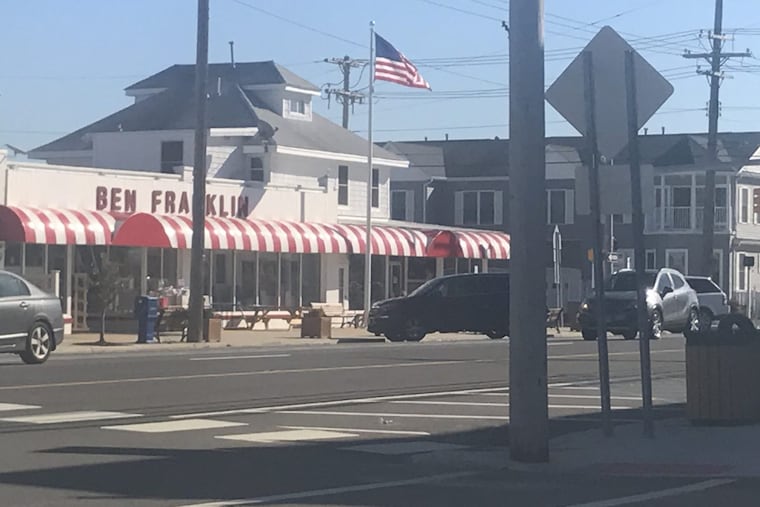After Hurricane Sandy, is the Jersey Shore a changed place?
"It's all new homeowners," said Jason Boekholt, whose family has owned the Ben Franklin store in Lavalette since the 1940s. The store is unchanged, but the same cannot be said about the town. "The new people have a million-dollar second home."

Wait, is that a Tesla with Pennsylvania plates outside a newly rebuilt house on Derby Avenue in Ventnor Heights?
And look, there's a BMW with Pennsylvania plates outside an old teardown on nearby Dorset Avenue.
At the same time, those year-round communities shrank. School enrollments dwindled in Atlantic County as much as 20 percent, as casino workers fled to other jurisdictions and foreclosures continued to be the dubious category at which the region excelled. Sandy pushed a lot of year-rounders over the edge.
For second-home owners from Philadelphia and, increasingly, New York City, their Jersey Shore did not materially change; if anything, it became more the Shore that shoobies love, with those pesky locals outnumbered.
But for the locals who stayed, whole neighborhoods seem to have changed hands, leaving towns pockmarked with empty homes and a host of fancy new neighbors. The surfer-bum culture that drew young people and old burnouts now belongs to the gear aficionados who stockpile expensive surfboards and Jet Skis.
"It's all new homeowners," said Jason Boekholt, whose family has owned the Ben Franklin store in Lavallette since the 1940s. The store is unchanged, but the same cannot be said about the town. "The new people have a million-dollar second home. Bigger families, bigger parties. They're very nice people. Even the cops said, it's like all different people. They're not troublemakers."
The old patchwork Shore where a blue-collar family could rent a home on the water and have millionaire neighbors took a hit after Sandy, despite concerted efforts to keep residents in their neighborhoods, and a vow by Gov. Christie to try to maintain working-class accessibility. The new Shore is richer, and for many, out of reach.
Just ask Frank and Graycee Rusnak, who lost a battle with their former landlord to stay in their year-round rental home on the bay in Brick. They were those blue-collar renters who enjoyed the Shore life right next door to, as Frank put it, the "multi-katrillionaires." Now they're renting on the mainland: OK, but not the same by a long shot.
"That's what it accomplished," said Frank. "It's going to weed out the people. Before, you had a millionaire and a rental next door. It was a melting pot. We had a beautiful home. Now it's turning into money."
Here's a sampling of thoughts from some other locals who lived out the storm.
Liz DeBeer, a retired teacher at Point Pleasant Beach High School, where a third of students returned to school homeless after Sandy, summed up the difference in perception for locals and visitors as evidenced in Sea Bright: "The beach clubs have all been rebuilt, and to many visitors, it looks fabulous. But if one looks a bit harder, there are still boarded-up buildings and homes just a few yards away. We celebrate when each business reopens, but for locals, we still see the scars and wonder what happened to the people whose homes are still boarded up."
On the plus side, locals note that the influx of eager new and loyal returning summer residents, whose love for the Shore has also carried down the generations, albeit in a different way, has created a renewed sense of community in the larger culture of the Jersey Shore.